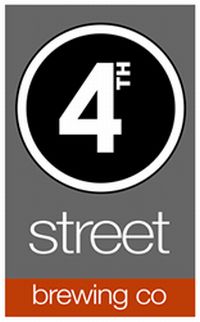4th Street Brewing Now Open
 4th Street Brewing of Gresham, formerly known as Main Street Brewing is now open for business. Says owner and brewer Adam Roberts: “We’re proud to be part of the Gresham community. We consider it our commitment as a Gresham business to help support the community, including various non-profits and Gresham High School. 4th Street Brewing is also a proud member of The Association of Brewers and the Oregon Brewers Guild.” (Show your membership card to your server for your special discount). Further the brewpub’s website adds “Our new building contains many ‘green’ elements including utilizing sustainable construction materials, large rooftop planters designed to naturally absorb and filter storm water, and rain screens designed to keep moisture away from the outside walls resulting in a healthier building.”
4th Street Brewing of Gresham, formerly known as Main Street Brewing is now open for business. Says owner and brewer Adam Roberts: “We’re proud to be part of the Gresham community. We consider it our commitment as a Gresham business to help support the community, including various non-profits and Gresham High School. 4th Street Brewing is also a proud member of The Association of Brewers and the Oregon Brewers Guild.” (Show your membership card to your server for your special discount). Further the brewpub’s website adds “Our new building contains many ‘green’ elements including utilizing sustainable construction materials, large rooftop planters designed to naturally absorb and filter storm water, and rain screens designed to keep moisture away from the outside walls resulting in a healthier building.”
Beer List
You’ll find our five regular mainstay beers on tap plus several seasonal or specialty beers. Whatever your beer preference, we have the perfect brew for you!
Mainstay Brews
- Gresham Light
Our lightest offering, Gresham light is crisp, clean and refreshing! it is the closest we have to a domestic lager. Light in color and body, this is a great beer to get your night started. - Demented Duck Amber
This German Amber Ale is ligther in body with an amber hue. Brewed with 2-row, Munich and aromatic malts witha very small amount of roasted barley for color, lightly hopped with saaz imported from the Czech Republic. - Black Roots Blonde
A light ale, brewed with 2-row & Caramel malts and lightly hopped with Northern Brewer and Tettnager. Easy drinking and smooth. - Powell Porter
A deep ruby color with a clean smooth finish carcterizes this ale. Brewed using Pale Ale, Chocolate and Speacial roast malts and hopped with Centennial and Cascade. Don’t let the dark color scare you, this is an easy drinking ale. - Eager Beaver IPA
This ale is all about the balance between the intense hop flavor and aroma and the malty body. Brewed with Pale Ale and Caramel Malts and over thirty pounds of hops.
Seasonal Brews
Coming Soon!
Our Brewing Process
- The Roller Mill
We begin the brewery process with two-row malted barley which is cracked in a roller mill along with a blend of domestic and imported specialty malts. A color and flavor profile is used to properly select the correct malts for each beer recipe. This selection process will help give each beer an individual flavor that is sure to stand out amongst the variety. - Mash Tun
The milled malt, referred to as grist, is transported to the mash tun, where it is mixed with hot water. This process is called mashing. Over the course of one to two hours, mashing converts starches within the grist into sugars. - Brew Kettle
At the end of the mash, the sweet liquid, called wort, is drawn off the bottom of the mash tun and transferred to the brew kettle in a process called lautering. Once in the brew kettle, the wort is brought to a boil. Hops, used for aroma and flavor, are added at various points ranging from mid-boil to 2 1/2 hours.After the boil, the sterile wort is whirl-pooled and left to settle for a brief period of time. This process helps clarify the wort. - Fermentation Tank
The wort is then pumped through the heat exchanger, where it is cooled and oxygenated, and then transferred into a temperature controlled fermentation tank. Yeast is immediately injected into the tank to initiate fermentation, during which yeast cells ingest the sugars in the wort, which in turn produces alcohol and carbon dioxide. For ales, primary fermentation lasts for three to four days at a typical temperature of 68 degrees Fahrenheit. After this time, tank temperatures are dropped and fermentation slows until completion, an additional one to two weeks. - The Finishing Touch
The beer is then transferred into a bright tank where it is carbonated at 31 degrees Fahrenheit. At this temperature, remaining particles of hops and yeast drop to the bottom of the tank, thus making the beer brighter. Additionally, this cold temperature allows the carbonation to go into, and stay in, the solution.
For more information, visit the website: http://www.4thstreetbrewing.com

